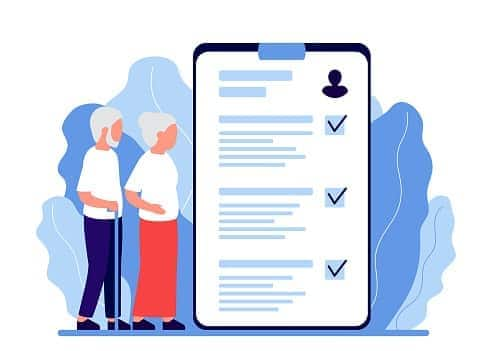Genetic testing for cancer: One woman's story
Maia Magder discovered the vagaries of health insurance companies when seeking BRCA testing. Her mother and maternal aunt both were diagnosed with breast cancer before the age of 40, her paternal aunt was diagnosed at age 41, and her maternal grandparents and her brother have had other forms of cancer.
Magder is of Ashkenazi Jewish descent, which puts her at higher risk for carrying a BRCA1 or BRCA2 mutation.
Her insurer was willing to pay for genetic testing -- only if she tested positive for the mutation. She didn't pay out of pocket, but had to sign an agreement stating that if her insurer wouldn't pay, she'd cover the costs.
There are several levels of testing available, and Magder chose the test that examines the most common mutations, which costs $500.The results were negative.
She learned more extensive testing would cost $3,000. "It was prohibitively expensive to us. This is the loopiest thing I've seen. Clearly there is something hereditary in my family, they have just not found the gene," Magder says. (See: "How to appeal a health claim denial -- and win.")
There are other rarer, inherited mutations other than BRCA1 and BRCA2 that put women at high risk for breast cancer. Li-Fraumeni syndrome, caused by a mutation of the TP53 gene, and Cowden syndrome, linked to a PTEN gene mutation, are two examples. Genetic tests are available for these rarer breast cancer conditions, but are not often covered by insurance, Mary Daly, chair of the department of clinical genetics at Fox Chase Center in Philadelphia, told NPR.
Magder decided to proceed with a prophylactic double mastectomy despite her negative test results from basic genetic tests. "I needed the peace of mind," she says.
Her health insurance company covered the costs of the mastectomy and reconstructive surgery, after her doctor recommended that she have the procedure.
Does insurance cover genetic testing for cancer?
Typically, health insurance plans will cover the cost of genetic testing if your doctor recommends it, though, as Magder's case points out, insurance providers have different policies about which tests are covered, according to the Genetics Home Reference website, run by the U.S. National Library of Medicine.
Cigna, for example, outlines the criteria you must meet for the insurance company to cover the cost of BRCA1 and BRCA2 testing. Cigna looks at things such as whether you've been diagnosed with breast cancer or any of your close relatives have.
It's one of more than 30 genetic testing policies Cigna has for various types of heritable disorders, such as certain cardiac conditions and colorectal cancers, says Julie Kessel, senior medical director for coverage policy.
Cigna has covered genetic testing for years, and requests have soared in the past two to three years, as technology has improved, Kessel says. Depending on the condition, a doctor's recommendation might be required for Cigna to agree to cover the costs.
If a woman suspects she might carry the BRCA1 or BRCA2 mutation, "we believe very much that a woman at risk really should have the testing. It might change their lives in a very positive and significant way," Kessel says.
Under provisions of the Patient Protection and Affordable Care Act, new health plans are required to pay for genetic counseling and testing for women who have a high risk of having the BRCA gene.
If you suspect you might be at risk, Schlager says you should speak with your physician and a genetic counselor. Genetic counseling is typically covered by insurance.
The counselor will look at yours and your family's medical history, and help assess your risk. The counselor also can serve as your advocate if you need to fight your insurer over genetic testing, Schlager says.
An estimated 940,000 people in the United States -- including men -- carry one of the mutations, Schlager says, and only about 10% are aware they do.
If you test positive, almost all insurance companies cover the cost of a prophylactic mastectomy and reconstruction, or an oophorectomy, which removes the ovaries.
Health insurance finder tool

COBRA
Learn more about COBRA
Medicare
Medicare costs vary depending on which option you choose.
Learn more about Medicare costs.
Medicaid

Parent's employer-sponsored health insurance

Spouse's employer-sponsored health insurance

Employer-sponsored health insurance

Preferred-provider Organization (PPOs)
Preferred-provider organization (PPOs) plans are the most common type of
employer-based health plan. PPOs have higher premiums than HMOs and HDHPs, but
those added costs offer you flexibility. A PPO allows you to get care anywhere
and without primary care provider referrals. You may have to pay more to get
out-of-network care, but a PPO will pick up a portion of the costs.
Find out more about the differences between plansHealth maintenance organization (HMO)
Health maintenance organization (HMO) plans have lower premiums than PPOs.
However, HMOs have more restrictions. HMOs don't allow you to get care outside
of your provider network. If you get out-of-network care, you'll likely have to
pay for all of it. HMOs also require you to get primary care provider referrals
to see specialists.
Find out more about the differences between plansHigh-deductible health plans (HDHPs)
High-deductible health plans (HDHPs) have become more common as employers look
to reduce their health costs. HDHPs have lower premiums than PPOs and HMOs, but
much higher deductibles. A deductible is what you have to pay for health care
services before your health plan chips in money. Once you reach your deductible,
the health plan pays a portion and you pay your share, which is called
coinsurance.
Find out more about the differences between plansExclusive provider organization (EPO)
Exclusive provider organization (EPO) plans offer the flexibility of a PPO with
the restricted network found in an HMO. EPOs don't require that members get a
referral to see a specialist. In that way, it's similar to a PPO. However, an
EPO requires in-network care, which is like an HMO.
Find out more about the differences between plans
Learn more about individual insurance plans
Life, long-term care and disability insurance and genetic testing
The Genetic Information Nondiscrimination Act prevents discrimination from health insurers and employers due to someone's genetic makeup, but the law does not cover long-term care insurance, life insurance or disability insurance, according to the National Institutes of Health.
Genworth, which offers long-term care and life insurance, doesn't ask an applicant if they've undergone genetic testing, but if the underwriting process turns up that they have, it could be used as part of the underwriting process, spokesman Tom Topinka says.
If someone is considering genetic testing for BRCA1 or BRCA2, genetic counselors will typically advise them to buy life insurance before they undergo the procedure, Schlager says.
For someone who has had preventive surgery, "the reality is that they probably have a lower risk than the average population," Schlager says.
Sources
MedlinePlus. Will health insurance cover the costs of genetic testing. Accessed May 2024.
FAQs
Is BRCA testing covered by insurance?
Yes, BRCA testing is often covered by health insurance, especially if you have a family history of breast or ovarian cancer. Coverage can vary, so it's important to check with your insurance provider to understand your benefits and potential costs.



 Genetic testing has become a powerful tool to determine the risk of cancer, especially breast cancer and ovarian cancer. But will insurance cover genetic testing for cancer?
Genetic testing has become a powerful tool to determine the risk of cancer, especially breast cancer and ovarian cancer. But will insurance cover genetic testing for cancer?










